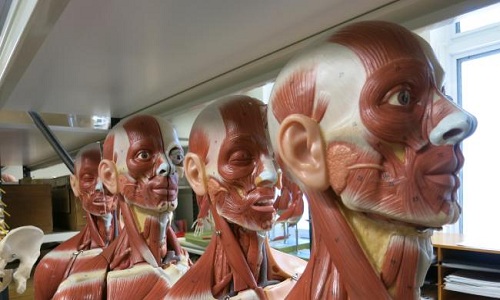After donating, how will your body be processed?
Choosing to donate the body to science can ensure a person can still contribute to society even after death. The bodies of donors will be preserved for use in anatomical studies or to train doctors in medical schools.
- Why can't we revive after death?
- Hero the process of self-mummification on the living of Japanese monks
- The corpses suddenly heated up, the mysterious phenomenon without a solution causing the scientists a headache
 After donating, how will your body be processed? Picture 1
After donating, how will your body be processed? Picture 1
After embalming the body, the body can last for about 6 years.(Photo: News.com.au.)
A donor of internal organs (including kidneys, hearts, pancreas, lungs, intestines, corneas, skin, .) and his tissues can save or improve the lives of 50 others .
Today, although there are many new teaching methods by modeling and 3D simulation, medical students still have to practice on real bodies. All surgeons from cosmetologists to cardiologists must learn and practice surgical techniques on the corpse.
When the donor dies, their body will be examined and evaluated to see if it can be used for scientific purposes. Potential donors must be at least 18 years of age, have good bodies and minds. The body was transferred to a morgue technician within 24-48 hours after death.
The bodies of malnourished people, obesity, jaundice, dementia, bowel cancer, stomach cancer and those undergoing chemotherapy are often not used for scientific purposes.
 After donating, how will your body be processed? Picture 2
After donating, how will your body be processed? Picture 2
A donor's hand has been preserved in chemicals since the 1980s. (Photo: Vice.)
With potential bodies, first, the technician takes a large sample of blood from the left ventricle to check the pathology of the dead. After that, the body was bathed clean, shaved hair and hair before carrying embalmed.
It takes 6-9 months to complete the chemical reactions of embalming and about 1-3 months to dissect the body. After mummification, the body can survive for at least 6 years.
 After donating, how will your body be processed? Picture 3
After donating, how will your body be processed? Picture 3
After the study, the body will be taken to cremation.(Photo: News.com.au.)
After the studies were completed, the body was taken to cremation as required by the Australian Implant and Anatomy Act of 1978. If the body was buried in the soil, the embalming substance could penetrate into the soil and polluting the environment.
(Video: Farnaz Khatibi Jafari.)
You should read it
- Horror cases of living with corpses
- If there is only one kidney, how will human life change?
- The corpses suddenly heated up, the mysterious phenomenon without a solution causing the scientists a headache
- Burning with water, a more environmentally friendly method of handling corpses than cremation
- The 5 health benefits of donating blood may not be known to you
- Find the gene that is still active after our bodies die
- Found the bird preserved naturally in the permafrost, 46,000 years intact
- Forensics use bacteria in the mouth to estimate the victim's death time
- Detecting dead bodies of humpback whales on the coast of Sea Isle City, USA
- Global warming is thawing ... corpses from the First World War
- The mystery of the dead bodies for thousands of years remains intact
- The human body and huge numbers startle you
May be interested

Not a UFO, this is the cause of the mysterious black circle in the sky of America

Admire the magic 'dancing' pillar of fire in the rare sulfur fire

Speedboat runs 'race' with the jet in the sky

Ships traveling around the world for 6 years do not need fuel

Find the gene that is still active after our bodies die

15 interesting facts about DRAGON phenomenon you may not know






 8 habits when processing eggs harmful to health you need to quit immediately
8 habits when processing eggs harmful to health you need to quit immediately What is body shaming?
What is body shaming? How to get rid of body odor naturally, simply but effectively
How to get rid of body odor naturally, simply but effectively The 5 health benefits of donating blood may not be known to you
The 5 health benefits of donating blood may not be known to you Does donating blood cause anemia?
Does donating blood cause anemia? Your body warning signs need to be released immediately
Your body warning signs need to be released immediately